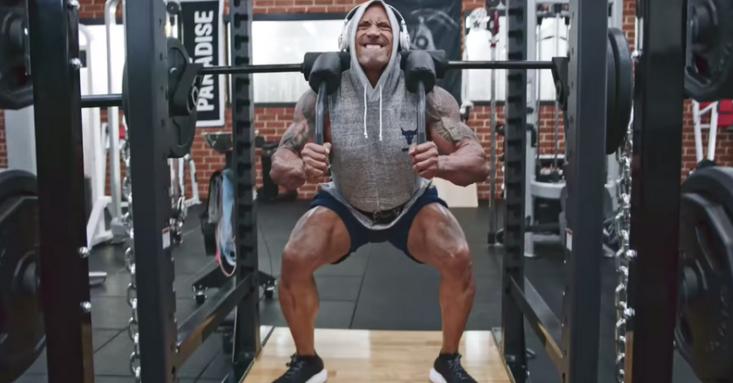The gym has fallen foul of many a training myth over the years
Whether it’s ‘carbs make you fat’ or ‘lifting weights makes women bulky’, bad science quickly spreads. The idea that squats are bad for your knees is arguably worse, but is still prevalent today.
Thankfully, research has proven that this is wide-of-the-mark.
Squats – and other leg-loading exercises – aren’t a risk to your joints. In fact, exercise performed safely should be on the frontline of the fight against joint issues such as knee osteoarthritis.
Two large reviews looked at the impact of exercise on knee joints.
In summary, scientists found that joint-loading leg exercises do not harm knee cartilage, and another review discovered they don’t spark knee inflammation either.
 Good luck trying to tell The Rock that he should stop squatting
Good luck trying to tell The Rock that he should stop squattingThese findings are in stark contrast to gym myths suggesting you shouldn’t squat below parallel if you’re looking to protect your knees.
More reasons why squats should feature in your training plan:
- Squats can boost your brain function: weight-bearing leg exercises send the most powerful neurological signals around your body that are vital for producing new, healthy brain cells. Another reason not to skip leg day
- They don’t just build bigger quads: the squat builds your glutes, hamstrings, much smaller muscles in the posterior chain and also calls on a whole load of core activation
- Fat burning: compound exercises such as the squat recruit multiple muscle groups at once, and because this requires more energy, your body burns a greater portion of calories as a result
How to perform squats
We recently asked a top personal trainer how to perform the squat with optimal technique. Their advice was simple:
- Pick a stance slightly outside shoulder-width, with feet pointing to 11 and 2 o’clock as a starting point
- If this position doesn’t feel comfortable or allow you to hit a decent depth, stand slightly wider and try again
- Try and keep your back straight, stay as upright as possible but don’t arch your lower back
- Keep your gaze focussed directly in front of you
- Squat down and aim to go further than when your thighs are parallel to the floor









































